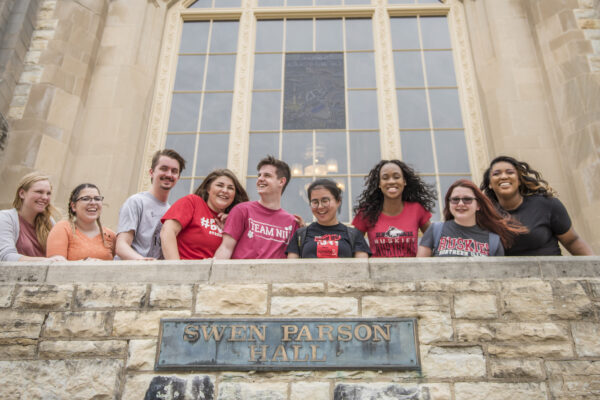By Linda Serra Hagedorn
In my recent brief for ACE, International Students in Community Colleges: An Unplanned Diversity, I pointed to the ways community colleges serve international students as well as the many benefits (beyond financial) that these students bring to campus. I also presented some considerations for attracting and retaining international students.
Community colleges were never designed for students from outside the United States, nor have they been given much attention. For that reason, if community colleges would like to attract, enroll, and retain these students, they must take deliberate and specific actions to plan and provide a five-star experience.
Working from these ideas, what are the qualities and programs that make community colleges attractive, friendly, and nurturing to international students?
The international student experience rating scale for community colleges
1 Star: A 1-star college takes no steps to attract international students and is not interested in building a reputation in other countries. While these colleges would welcome international applicants and may have even enrolled a small number of international students throughout the years, they offer no special programs, services, or support—including administrative support for visas—and no training for faculty and staff.
2 Stars: A 2-star college is aware of the value that international students bring to their campus. At these institutions, at least one admission advisor has received special training on immigration, F-1 visa requirements, and the college’s responsibilities in responding to international students.
The 2-star college does not have a special orientation for international students but may require that all international students attend the regular orientation plus an additional supplementary module. Many 2-star colleges will have a short faculty development module on working with students for whom English is not the first language.
3 Stars: A 3-star rating is the most common. Three-star community colleges are equipped to process international student visas, have developed an appreciation for the cross-cultural value students bring to campus, and would like to increase international enrollment. While they may not actively recruit international students, they do urge their international alumni to spread the word about the college when they return to their home countries.
The website of 3-star colleges includes information for international admissions. They have admissions officers and advisors trained to work with international students and are well-versed in immigration issues and student visas. There is typically a separate and expanded orientation for international students to help them acclimate not only to the college, but also to the country and local community.
While individual employees and domestic students may take it upon themselves to assist students in adjusting to a new country by, for example, helping them find places to live and shop, the college does not officially offer that level of support. When needed, advisors and counselors may refer international students experiencing challenges to local social support agencies.
Most 3-star colleges also offer study-abroad opportunities. While study-abroad is clearly not a part of international student service, it does promote a global-friendly climate.
4 Stars: Colleges earning a 4-star rating are globally minded. They take a proactive approach to international recruitment and admissions. Four-star colleges will attend international recruitment fairs in countries with a significant history of students studying in the United States. They may arrange meetings with international alumni who can help with invitations and introductions to prospective students and their families.
Many 4-star colleges offer a distinct intensive English program designed for international students who have low-level English skills. Websites of 4-star colleges have clear directions for international students and may have options for the page to be translated into the languages of targeted regions so that parents can learn about the college’s programs. Four-star colleges begin advising international students prior to their U.S. arrival, and often provide airport pickup and housing guidance if needed. These colleges offer a mandatory, extensive, multi-day orientation for international students that takes place prior to the semester start.
Services do not stop after the student arrives; rather 4-star colleges offer assistance for international students through writing centers, tutoring, or other academic supports.
5 Stars: The 5-star rating is reserved for only those colleges who make international students a priority. Five-star colleges offer all the services described for their 4-star counterparts, plus more.
Five-star colleges may, for example, actively recruit international students and partner with U.S. governmental entities that support international students. For example, EducationUSA, run by the U.S. Department of State in more than 425 centers across the globe, assists students by helping them identify colleges or universities that fit their occupational and study goals. Five-star colleges strategically target specific countries or regions with the goal of enrolling a critical mass of students rather than just a single recruit, to encourage community development on campus.
Some colleges have contracted with reputable, carefully vetted agents in the regions of interest, and some may offer small scholarships. One 5-star college even operates an office in Vietnam, their region of concentration, to recruit, answer questions, and provide some short courses for prospective students.
Once students apply for admission, 5-star colleges begin communications through international mailings and letters to parents in the student’s native language. Five-star colleges have intentionally-planned residential options for international students. These might include housing designated for international students, residential programming that supports intercultural competence for both domestic and international students, or local arrangements for housing international students on or close to campus.
A 5-star college may have a buddy program that matches international and domestic students and promotes cross-cultural learning and relationship building for both partners. Buddies may begin corresponding once the students have accepted admission.
Of course, only a few colleges earn a 5-star rating, but those that do understand that committing to international students support strengthens their entire operation.
This rating scale is not meant to imply that ALL colleges should be, or should strive to be, 5-star colleges. Rather, I offer it to help community colleges consider their services for international students, better understand how they may appear from an international student perspective, and, if desired, have some direction on how to enhance their services.
If you have any questions or comments about this blog post, please contact us.


